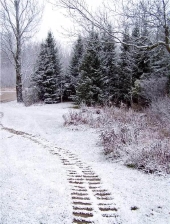Dale,
I'd like to know how this turns out. I don't think you should be hurt by cob traditionalists. I think building a cob structure manually can be fun and fulfilling for some, but by and large I agree with you. Human progress and innovation shouldn't be inhibited because "this is the way it's always been done". Isn't that often a mentality that gets us into all kinds of quagmires?
From an environmentalist standpoint there's even less to complain about. Aside from the process of construction itself, the building you've constructed will have taken and will take far less energy to maintain and build on than a conventional structure. Also, should it be abandoned the materials will (for the greatest part) naturally degrade and have little to no impact on the surrounding area.
Point is, no matter what way you look at it, it's a step in the right direction.
Finally, cob now is just as intensive as any home was to build by hand at any other time. Think about it, before lumber yards, pre-fabbed framing, and all of the tools and innovations that came with them building a house was hard work. Turns out it still is. I think it's great someone is trying to make technology make a better home. I imagine in time there will be inventions that make building a cob home far less labor instinctive than it is now. Homes will go up quicker and be made better along the way.
Envision a world where modern building is heavily influenced by natural building. You consult an architect and they do a soil sample on your land and give you options as to the building methods in various places. Whether it be cob or rammed earth tires or a geodesic dome. The design takes the movement of the sun into consideration and yearly temperatures, soil temperature and permeability, etc. They design the structure and say you decide on cob. The builders rent a cob mixer from a home depot, there are special tools for cob building, and plasters that breath and are made from sustainable products simply dug up and mixed but that need little to no energy to make unlike concrete. A result of digging up the cob is a trench to lay PEX tubing for earth tubes. Vertical turbine wind generators are the fad in your neighborhood so you put one up. You hire a landscaping company that keeps a
compost pile on your property (YOU DO NOTHING but add organic waste, they send out landscapers to turn it and manage it. Maybe reduce your monthly costs by buying back compost.) In addition your compost now heats your home. Perhaps toilet waste is connected to a community sewer that burns the methane produced for electricity in your neighborhood. The remaining waste is pumped to an algae farm as algae food which is harvested for oil products and more natural fertilizer.
These are all wonderful things to consider. It's one thing to go offgrid (I like the idea myself), but those of us that are more extreme have to have respect for guys like Dale, that simply want to bring the lessons learned to the common man. Certainly no harm can come of that. Only good things.

































 1
1































